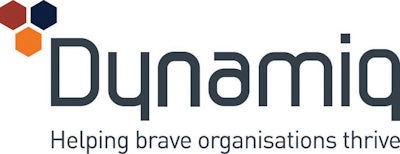
Standardisation provides greater consistency in business resilience and decision-making for mining companies operating across multiple regions, enabling more efficient coordination of activities.
However, achieving the standardisation of a resilience program in the mining industry is filled with challenges. These may include assets spread far apart globally and a workforce with varying approaches and cultures.
Furthermore, operations at other locations may use different communications and data exchange platforms. Then there is the potential language barrier. Ultimately, this all contributes to a lack of consistency and greater complexity throughout operations, leading to a fragmented approach to incident management and inefficiencies. And during a crisis, any inconsistencies or inaccuracies will be exposed.
Yet if everyone has access to the same operational data from a shared resilience platform, it increases clarity. Any trends can be assessed through organisation-wide data analysis, identifying when there is a need for an intervention. Centralisation enables targeted interventions and continuous improvements, maximising investment and minimising the cost of incidents to an organisation.
Achieving standardisation can depend on the leadership style and business culture within an organisation. A hierarchical organisation that imposes commands from the top will likely be worse off than one that fosters collaboration and takes constructive feedback on board to drive continuous improvement, which connects back to resilience.
“An important part around operational resilience is the continuous improvement. So, the standardisation and then a continuous improvement culture, post-exercise and post-event, where they’re doing the reviews, it’s all allowing them to improve the system each time,” explains Jarrod Wilson, CEO of Dynamiq.
“If they have standardisation, it allows that to spread across all the operations. Rather than just that lesson being learned in a localised environment, they can improve the whole system.”
Dynamiq’s EMQnet platform is a centralised digital resilience platform that allows everyone within an organisation to access a consistent set of operational data. Users can also log in on any device anywhere in the world, further increasing accessibility. The platform facilitates post-event reviews and identifies areas of risk for further improvements.
“EMQnet allows everyone to come together with a common operating picture. Even if they are operating differently, they can still at least agree on what the facts are,” adds Wilson.
Communications consistency at mines
In an interconnected world, leveraging technology for interoperability has become even more important in improving the speed and accuracy of communications.
A standardised business resilience platform allows data to be targeted to the people who need it, without sending out alerts to everyone for everything happening across all operations. Personnel receive the exact information they need to do their jobs without being distracted by multiple notifications.
“You don’t want to send a deluge of information to people, you just want to keep it specific, and to the point of exactly what they need,” adds Wilson.
Often with mining businesses, a corporate office may be in a completely different country to where impacted operations are. This can lead to gaps in the understanding of national regulatory requirements. Having that common operating terminology and reliable communication channels removes any potential ambiguity.
A shared digital resilience platform enhances communication channels. EMQnet enables the secure sharing of vital documentation with approved and trusted third parties and official bodies. For example, if regulators need to approve a re-entry plan for a mine, they can view this on EMQnet. This increases the speed of approval processes, minimises downtime, and allows operations to resume as quickly as possible.
In addition, with global operations, the language barrier can obstruct operations. There can be confusion between management and the workforce due to the lack of clarity in communications.
“That’s a significant barrier in some organisations. We have clients that may be headquartered in the US and have several mines in remote areas of South America where the dominant language is Spanish. So, having that ability to translate accurately is a substantial benefit,” says Lucas Saunders, Head of Advisory at Dynamiq.
EMQnet allows communication in different languages, removing barriers and increasing operations efficiency.
Leveraging resources through standardisation
Standardisation in business resilience means that they can operate a leaner model during an incident due to the flexibility and agility in responding to threats. Resources can be leveraged both internally and externally according to what is happening on the ground. This avoids the issue of overstaffing or understaffing in certain sites. Operators can have the best people for the job regardless of their location without compromising operational confidentiality.
“You can also bring in external subject matter experts and limit what they can see within the platform,” adds Saunders.
“For example, if you need a geotech expert for a high wall failure or a dam failure and they need a dam engineer, they can bring those experts into their platform and give them access to a workspace only.
“They can limit the information external parties can see through access control. They can also attach documents, plans or inundation mapping, bringing these into the workspace feature. This allows them to see the relevant information that enables them to make key decisions at the appropriate time.”
Regular training is also essential for an effective business resilience platform. Through routine crisis management training, personnel become familiar with the platform, enabling them to understand what to do during a serious event. Furthermore, a centrally managed capability avoids exposing inexperienced staff to duties and locations they are ill-equipped for.
EMQnet allows the management of risks and is fully configurable around existing management systems. The resilience platform supports a ‘just in time’ resource model for both training and real response. “The simpler you can keep the approach, the more simple you can keep their processes and procedures when they’re working under significant pressure – you’re talking about people’s lives, you’re talking about their organisations – the more effective the resilience program will be,” adds Saunders.


